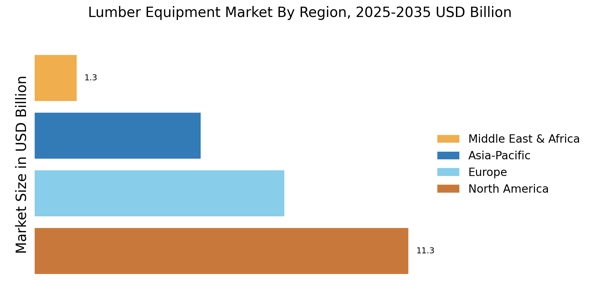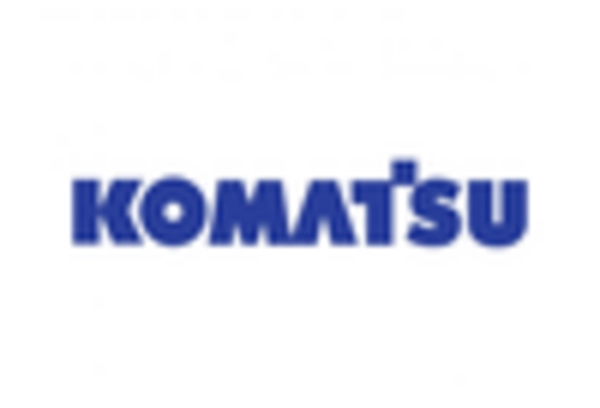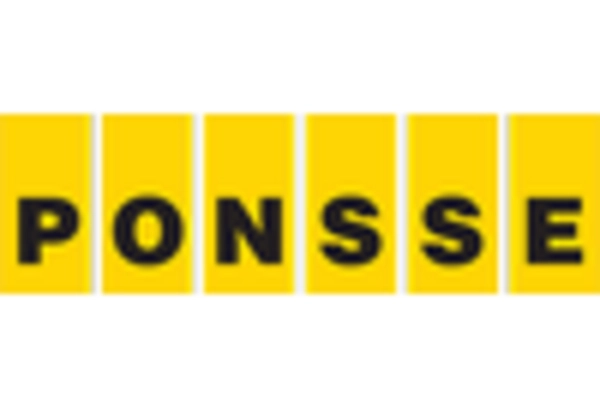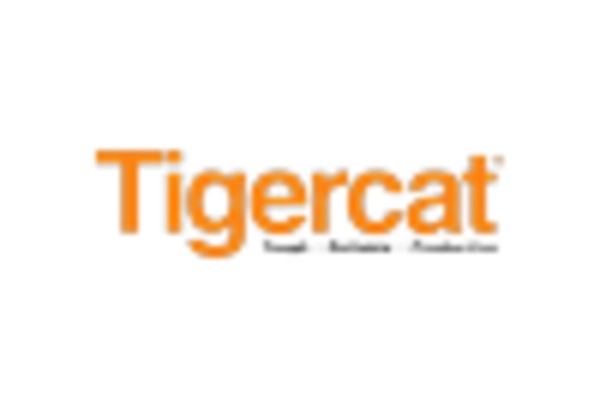Technological Advancements
Technological advancements are playing a pivotal role in shaping the Lumber Equipment Market. The integration of automation and smart technologies is enhancing operational efficiency and precision in lumber processing. For example, the adoption of computer numerical control (CNC) machines is revolutionizing the way lumber is cut and shaped, resulting in reduced waste and improved product quality. In 2025, it is anticipated that the market for automated lumber equipment will expand significantly, as manufacturers seek to optimize their production processes. This trend not only boosts productivity but also aligns with the growing demand for high-quality lumber products in various applications.
Rising Environmental Regulations
The Lumber Equipment Market is increasingly influenced by stringent environmental regulations aimed at promoting sustainable forestry practices. Governments are implementing policies that encourage the use of eco-friendly equipment and processes, which could lead to a shift in market dynamics. For instance, regulations may mandate the use of energy-efficient machinery that minimizes waste and emissions. This trend is likely to drive innovation within the Lumber Equipment Market, as companies strive to comply with these regulations while maintaining profitability. The emphasis on sustainability may also open new avenues for growth, as consumers become more conscious of the environmental impact of their purchases.
Increased Construction Activities
The Lumber Equipment Market is experiencing a surge in demand due to heightened construction activities across various sectors. As urbanization continues to expand, the need for residential and commercial buildings has escalated. In 2025, the construction sector is projected to grow by approximately 5%, driving the demand for lumber equipment. This growth is further fueled by government initiatives aimed at infrastructure development, which often require advanced lumber processing machinery. Consequently, manufacturers in the Lumber Equipment Market are likely to invest in innovative technologies to meet the rising demand, thereby enhancing production efficiency and product quality.
Expansion of the Furniture Industry
The Lumber Equipment Market is significantly impacted by the expansion of the furniture industry, which relies heavily on high-quality lumber for production. As consumer preferences shift towards custom and artisanal furniture, the demand for specialized lumber equipment is likely to increase. In 2025, the furniture market is projected to grow by approximately 4%, creating opportunities for lumber equipment manufacturers to develop tailored solutions. This growth may drive investments in advanced machinery that can accommodate diverse design requirements and enhance production capabilities. Consequently, the Lumber Equipment Market is poised to benefit from the synergies between furniture manufacturing and lumber processing.
Growing Demand for Renewable Resources
The Lumber Equipment Market is witnessing a growing demand for renewable resources, particularly as consumers and industries shift towards sustainable materials. Wood, being a renewable resource, is increasingly favored in construction and manufacturing sectors. This trend is likely to be bolstered by the rising awareness of the environmental benefits associated with using wood products. In 2025, the market for lumber equipment is expected to expand as companies adapt to this demand by offering equipment that supports sustainable practices. This shift may also encourage innovation in the design and functionality of lumber equipment, catering to the evolving preferences of environmentally conscious consumers.


















Leave a Comment